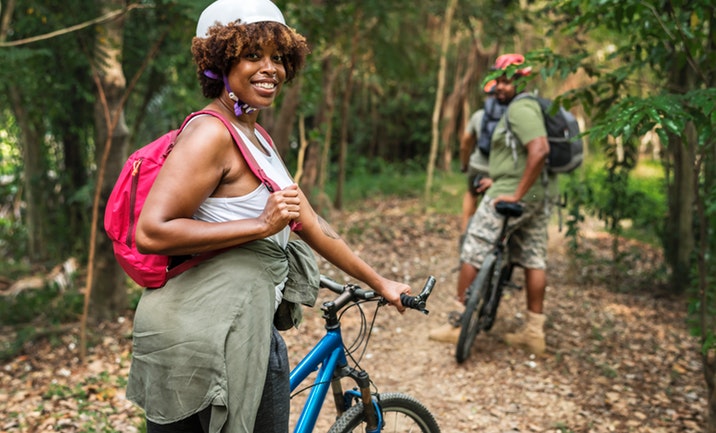Osteoarthritis is a disease of the joints that causes cartilage degradation, bone proliferation or bone cyst formation. Cartilage is a shiny and smooth connective buffer provides a lining for the joints and allows their surfaces to slide easily when you make a movement. As a connective tissue, it works as a projection for joints and body ends. Although osteoarthritis can damage all joints, it often affects the hands, knees, spine, feet and hips. How to live with osteoarthritis
How to live with osteoarthritis
The life philosophy of a patient with osteoarthritis is based on two pillars – firstly, on the desire to lead an active lifestyle, do special exercises and maintain a general physical shape. In principle, this is the attitude of modern man to life in general in all civilized countries. Secondly, on the ability to adapt to certain limitations due to functional changes in joint mobility, which means not only functional adaptation, but also the ability to “trick” painful joints with various techniques. The gradual development of this disease allows you to think through a treatment strategy and ensure its correction.
Tackle Osteoarthritis Early
The appearance of the first symptoms of osteoarthritis should not lead to any changes in the patient’s lifestyle, but rather should stimulate him to regular exercises with specially selected exercises. These exercises are aimed at strengthening the muscles and maintaining the mobility of the affected joints. Patients should make these exercises a permanent part of their daily life, turning them into a kind of entertainment, and not just an unpleasant chore. Taking classes of such exercises should lead to an overall strengthening of the body. As a result, after 2-3 months the pain disappears, the patient’s psychological state improves, and depression disappears. A reasonable relationship between movement and rest should be observed, especially at the time when decompensation of osteoarthritis occurs.
Tips
For the patient, such exercises become a means of preserving not only the good functioning of the joints, but also a way to “be in shape” in general. The concept of “being in shape” includes a combination of several factors, namely: cardiac activity, the function of the lungs and vascular system, muscle strength, flexibility and reduction of body fat. If the patient is in good physical shape, then he has more hopes for success in the fight against osteoarthritis.
In osteoarthritis, the main problem is cartilage, and the exercise program should therefore include special movements aimed at strengthening the cartilage layer. Movement is necessary to keep the cartilage healthy. If we compare the cartilage with a kind of absorbing sponge, then during movement, fluid, minerals and other substances are displaced from it; and at rest, the cartilage, on the contrary, absorbs water and nutrients from the joint area. If the joint does not make regular movements or cartilage in the hip and knee joints is constantly compressed during long standing, then this cycle with the displacement and absorption of water and nutrients does not occur. Cartilage at the same time literally decays. Exercises for osteoarthritis should be aimed at the full development of joints several times a day.
Some types of exercises for patients with osteoarthritis
For patients with osteoarthritis of large joints like knee and hip, it is best to take a kind of induction course under the guidance of a rehabilitation specialist. If the patient is involved in group exercises of patients with the same disease, then this could be the easiest way to solve the problem of selecting the appropriate course of physical exercises. Regular home activities require a certain discipline and willpower.
Achieving complete mobility of the affected joint is not the goal of these exercises for osteoarthritis, as it can be torn or damaged. The main principle is the frequent repetition of exercises several times a day for several minutes.
Lying on the knee
1. In the supine position, bend the legs (in turn) at the knees to the maximum, pressing them to the body. After that, the leg straightens again. This exercise the easiest.
2. The most difficult exercise when lying down is lifting sore feet to a height of 20-30 cm above the bedding and subsequently lowering them.
3. Imitation of cycling – legs raised above the waist throughout the exercise. These movements work on the hip joint.
Hip exercise while lying on your back
1. Relaxing exercises. Both legs bend at the knee to the maximum. In a bent position they are moved in sides and brought together again. After that, the legs are straightened.
Standing exercise
Leaning on the edge of the table, we stand on the step (with a backup if possible). We move the second leg back and forth. This range exercise is gradually increased and coupled with foot movement.
Other fitness options
This includes regular walks and swimming in the pool (aqua gymnastics). As for walking with osteoarthritis, it should be emphasized that long walks are not the best way (given the load on the sore joints), but do not shy away from light, short walks. Since cycling (where excess body weight does not increase the load on the joints) is much better for maintaining muscle strength, it should be given more attention.
Cycling for patients with osteoarthritis and other rheumatic diseases is one of the most enjoyable physical exercises. Group cycling in good weather lets the cyclist stay in the fresh air and the sun, and enjoy with people going through the same challenge. However, there are certain dangers associated with the bicycle (traffic and the possibility of falling). Falling from a bicycle can have quite serious consequences; therefore, if you have difficulty maintaining balance, weakness, vision and hearing problems, or bone decalcification (osteoporosis), then cycling is not for you, and it’s best to do cycling on a home simulator.

